Let’s explore the fascinating realm of Otocinclus, the delightful and low-maintenance fish!
Commonly referred to as Otos or Oto Catfish, these tranquil swimmers are highly skilled at maintaining a clean aquarium by feasting on algae. Their nimbleness and amiable nature make them perfect companions for a variety of tank mates.
In this blog, we will uncover otocinclus lifespan, what otocinclus eat, and are otocinclus nocturnal or not? Also, keep yourself hooked till the last if you want to gain knowledge regarding interesting facts about algae eater otocinclus fish, their tank mates, and even their breeding requirements!
Get ready to learn about algae eater otocinclus – your aquarium’s smallest yet most endearing helpers!
What is Otocinclus Catfish?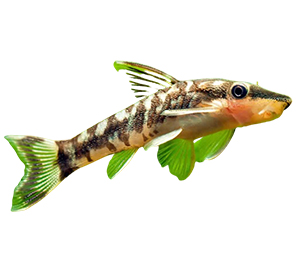
Otocinclus belongs to a family of small catfish species that originated in South America. Catfish are easily identifiable by their whisker-like appendages, and some of them even possess venomous spines.
These fish have adapted to various habitats ranging from freshwater environments to oceans, and they come in different sizes.
Algae eater otocinclus is only about an inch long. They tend to be predominantly active during nighttime hours and typically reside near the bottom of their tank.
Disclosure: This article contains affiliate links. When you follow a link to purchase the products, I sometimes earn a commission, at no additional cost to you. Read my full disclosure here.
Interesting Facts about Otocinclus Catfish
- Behavior and Compatibility: Algae eater otocinclus are creatures of the night that attach themselves to different surfaces, mainly feeding on algae. They get along well with other fish and their calm temperament allows multiple otos to coexist without any problems.
- Small Size: These fish are known for their compact size, measuring between 1 to 2 inches in length. Female otos tend to be bigger and wider than males. There is a rare exception among otocinclus species called the Giant Otocinclus which can reach up to 4 inches in length, although it is still considered small compared to other freshwater fish.
- Physical Characteristics: Otocinclus catfish have slender, cylindrical bodies with short fins that help them cling to surfaces as they feed. One interesting feature is the hollow space between their esophagus and stomach, which allows them to breathe small amounts of air from the water’s surface.
- Coloration: Otos can be easily distinguished from other types of catfish by the rows of protective armor plating on their bodies. The coloration and patterns vary depending on the specific species of otocinclus. For example, the common algae eater otocinclus typically has a brown-striped upper body paired with a white lower body and nearly transparent fins.
- Algae Eater: Otocinclus, also known as Natural Algae Managers, are not only cute but they also perform an important role in keeping aquarium ecosystems clean and balanced. These small fish are highly efficient at eating algae, which helps prevent the overgrowth of unwanted algae in the tank. By constantly grazing on algae, Otocinclus ensures a healthier environment for other inhabitants of the aquarium.
- Bioindicators of Water Quality: Algae eater otocinclus are highly responsive to variations in water conditions, making them excellent bioindicators. Their well-being and behavior can offer significant clues about the overall quality of the water they inhabit. The occurrence of signs indicating health problems or stress among Otos is indicative that alterations might be necessary within their tank.
- Mysterious Behavior: These fish have a tendency to display mysterious behavior, frequently staying near surfaces such as rocks and driftwood. This distinctive characteristic serves as both a survival technique in their natural habitat and brings an air of enigma and fascination to their actions within the aquarium.
- Symbiotic Relationship: In their natural environments, Otocinclus fish frequently form symbiotic partnerships with other aquatic creatures. One example is when they team up with particular types of shrimp: the shrimp take on the role of cleaning the fish while benefiting from a reliable food supply provided by the otocinclus.
- Gender Differences: Differentiating between male and female ottos can be difficult at first, as they have similar colors and patterns, especially when they are young.
However, it becomes easier as they grow older. Female algae eater otocinclus develop a slightly larger and wider body compared to males, particularly when carrying eggs. On the other hand, males remain smaller and more slender in comparison to females. - Otocinclus Lifespan: The otocinclus lifespan is expected to be approximately 3 to 7 years if they receive proper care. However, it’s worth mentioning that otocinclus lifespan is usually shorter in the wild, lasting only around 2 to 3 years.
Best Tank Mates for Otocinclus Catfish
Algae eater otocinclus catfish are known for their calm and peaceful nature, which makes them a great addition to any community tank.
They prefer the company of their own kind and thrive when kept in groups of at least 6 or more since they are shoaling fish.
When creating an environment for them, it’s best to choose tank mates that share their gentle and peaceful temperament.
- Angelfish: These residents of South America have comparable tank needs as algae eater otocinclus. Despite being lovely and big, you should be wary of crowding because of their capacity for expansion.
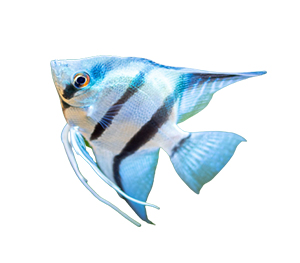
- Corydora Fish: Another variety of catfish is the corydora, which is a calm bottom feeder. They favor soft water and a low pH, which fits the requirements of algae eater otocinclus.
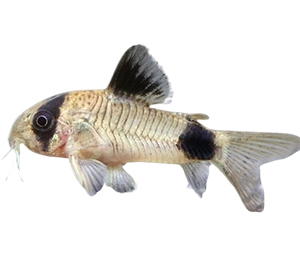
- Discus Fish: These fish, which are renowned for their size and vivid colours, are also native to the Amazon. Their calm demeanor blends well with otocinclus.
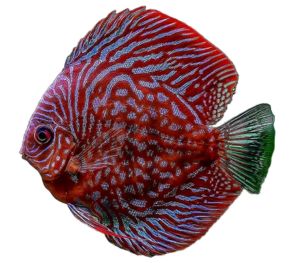
- Gouramis: Despite coming from a variety of origins, many gourami species can adapt to different tank conditions. When properly acclimated, their serene temperament flourishes.
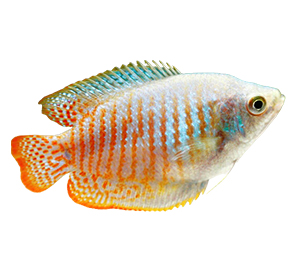
- Livebearers: Small, vibrant species including guppies, platies, swordtails, and mollies are perfect for community aquariums.
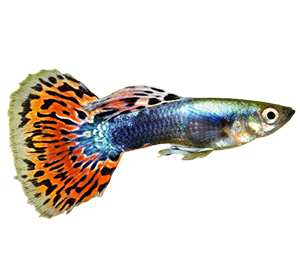
- Rasboras: These colorful, schooling fish are hardy and tiny. Their vibrant hues and serene attitudes go well with algae eater otocinclus’ natural characteristics.
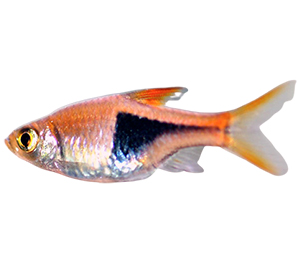
- Tetras: Tetras are calm and lively fish that are excellent for beginners. Their peaceful nature fits well with algae eater otocinclus.
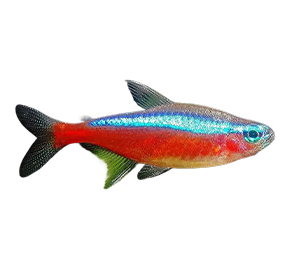
Are Otocinculus Nocturnal?
When people hear the name of algae eater otocinclus, they assume that these fish are nocturnal. But, are otocinculus fish nocturnal in real?
Dwarf suckers, also referred to as otocinclus catfish, are more active during the day than at night. These tiny catfish are well-known for consuming aquarium algae to keep the water clean. They enjoy eating algae and other slimy materials that are on surfaces, including foliage and decor.
They are likely to be more active when the daylight is up, but how much movement they exhibit can vary depending on factors such as the brightness of the lights inside the tank, the cleanliness of the water, and the availability of food. They occasionally may also be more active in the early hours of the day or late afternoon.
Hence, are otocinculus fish nocturnal? No, in fact they are diurnal!
What do Otocinclus Eat?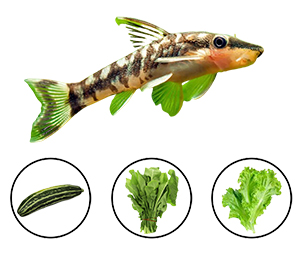
If you are wondering what do otocinclus eat then it has been discovered that these catfish consume predominantly algae, plant material, and bacteria in their diets. An aquarium with abundant flora and algae growth mimics their natural habitat and is suitable for their diet.
Otos enjoy blanched vegetables like spinach, lettuce and zucchini in addition to algae. Give them tiny bits of these vegetables in the tank, and after 24 hours, remove any remains right away.
Moreover, a large number of algae eater otocinclus living in a tank with other algae-eating species may soon exhaust the algae supply. In order to solve this problem and avoid food shortages, add algal wafers to their diet.
Now about their feeding requirements of what do otocinclus eat; they should only be fed commercial diets or vegetable shreds two to four times per week because they are scavengers that have evolved to thrive on algae and plant matter.
Breeding Otocinclus Catfish
The breeding habits of algae eater otocinclus are comparable to those of corydoras catfish.
Females are a bit bigger than males, especially when they are pregnant. Increase their consumption of protein in addition to their regular diet by feeding them live brine prawns and micro worms to get them ready to breed. Some hobbyists modify the water to simulate breeding circumstances.
Breeding couples assume a T pose, and females adhere sticky eggs to materials like plant leaves. To avoid predation, these egg clutches, each holding 30 to 40 eggs, should be eliminated. The fry hatch in an additional container with an air stone after about three days.
They consume small meals, soft algae, and green water as diet. For faster growth, gradually add live baby brine prawns. Given their small size, moderate filtration is essential to keep the fry safe.
Conclusion
In summary, despite shorter otocinclus lifespan, they are a valuable addition to aquariums due to their peaceful behavior and ability to consume algae.
By replicating their natural environment and feeding them appropriately, we can ensure that they remain healthy while also serving as pleasant companions in your tiny tank!
Otocinclus Catfish Infographic




